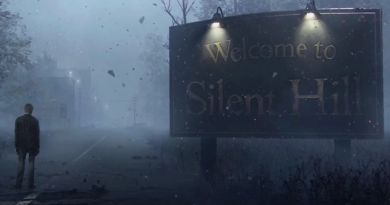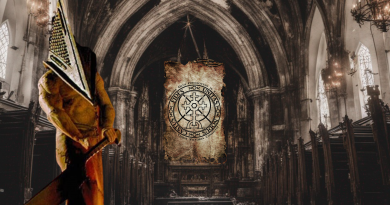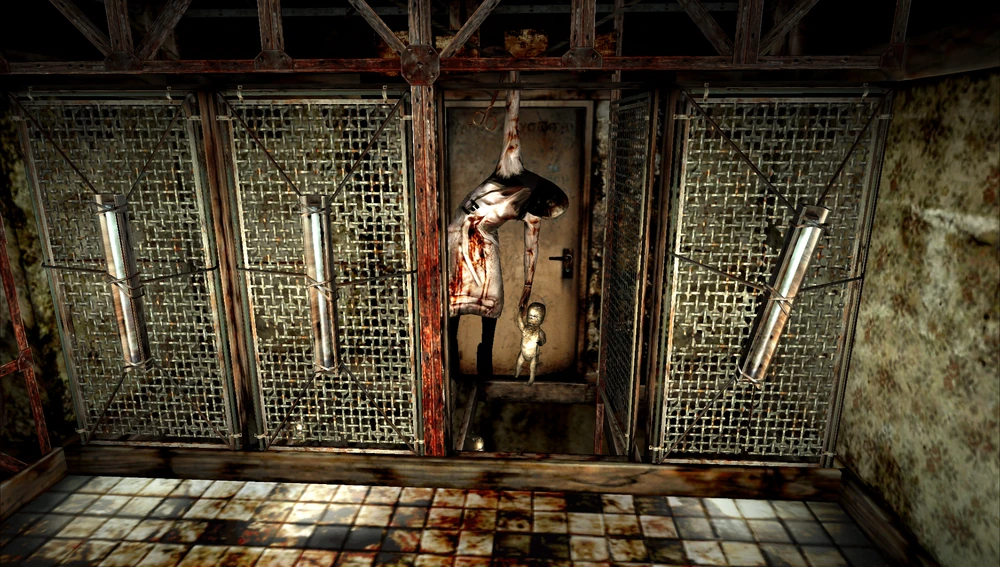Silent Hill Lore Part 3
The Fog and Otherworld
The Otherworld is a significant element in the “Silent Hill” series, representing a twisted, nightmarish version of reality that is deeply tied to the psyche of the characters and the supernatural power of the town. It serves as a dimension where the horrors of Silent Hill are most explicitly manifested, blending psychological horror, the subconscious fears of individuals, and the occult influences of the town.
Here’s a detailed breakdown of the Otherworld:
1. Nature of the Otherworld
The Otherworld is essentially an alternate dimension that overlays the real world of Silent Hill, representing the darker side of the town. It is a nightmarish landscape that shifts in form and appearance depending on who is experiencing it. The transition into the Otherworld is usually marked by sudden, jarring changes in the environment, often accompanied by sirens, visual distortions, and oppressive, unsettling atmospheres.
Key Features of the Otherworld:
- Surreal Environment: In the Otherworld, the normal layout of Silent Hill transforms into something twisted and dark. Rusted metal, bloodstained walls, barbed wire, grates, and industrial-style elements are often present, giving it an industrial, decaying appearance. The Otherworld is claustrophobic, disorienting, and reflects the psychological turmoil of those experiencing it.
- Dynamic Changes: The transition to the Otherworld can happen abruptly, typically heralded by air raid sirens, lights flickering, and a shift in the appearance of the environment. The change from the “Fog World” (the version of Silent Hill shrouded in fog) to the Otherworld usually represents an intensification of the character’s fears and struggles.
2. Psychological Representation
The Otherworld is heavily influenced by the psyche of the character experiencing it, effectively serving as a reflection of their fears, guilt, and traumas. This personalized nature makes each person’s version of the Otherworld different, tailored to bring out their deepest anxieties and regrets.
-
James Sunderland (“Silent Hill 2”): In “Silent Hill 2,” the Otherworld manifests James’ feelings of guilt, grief, and shame over his wife’s death. The environments are filled with sexually suggestive and grotesque imagery, such as nurses and the infamous Pyramid Head, which reflect James’ suppressed emotions, including guilt and sexual frustration.
-
Alessa Gillespie (“Silent Hill” and “Silent Hill 3”): Alessa’s Otherworld is a chaotic blend of her trauma, pain, and resentment. It’s filled with images of burning and suffering, referencing her experience of being burned alive by The Order as part of their ritual. This version of the Otherworld is filled with symbols that evoke her suffering and reflects her longing for escape and her desire for vengeance.
-
Heather Mason (“Silent Hill 3”): In “Silent Hill 3,” Heather’s Otherworld is similarly influenced by Alessa’s lingering pain. The environments shift between twisted amusement parks, blood-streaked halls, and grotesque imagery reflecting the torment she’s inherited from her connection to Alessa and the cult.
3. Transition to the Otherworld
The transition into the Otherworld is one of the defining features of the Silent Hill series. It often occurs suddenly, with audio and visual cues that heighten the sense of fear. The most iconic cue is the blaring of an air raid siren, which signals the transition. During these moments, the walls seem to melt away, environments corrode, and everything takes on a more nightmarish and decaying look.
There are different ways characters are transported into the Otherworld:
- Triggered by Trauma: Often, characters are pulled into the Otherworld during moments of intense emotional distress, when their fears or suppressed feelings come to the surface.
- Supernatural Manipulation: The Order and the supernatural forces in Silent Hill can also forcibly bring people into the Otherworld, using it as a tool to influence or punish.
4. The Fog World vs. The Otherworld
In Silent Hill, the town generally exists in two main states: the Fog World and the Otherworld.
-
Fog World: The “normal” version of Silent Hill is blanketed in a thick, eerie fog, often desolate and abandoned, with a heavy sense of isolation. This version of the town is also affected by the supernatural but in a less overtly horrific manner. The Fog World creates an unsettling atmosphere, with limited visibility, strange noises, and a sense of foreboding.
-
Otherworld: The Otherworld is the more sinister transformation, filled with disturbing visuals, symbols, and monsters. It represents the ultimate shift into the nightmare, where the environment itself is overtly hostile, seemingly alive, and filled with impossible, maze-like architecture and grotesque imagery. This world directly pulls from the character’s subconscious and seems almost designed to reflect their innermost fears and emotions.
5. Monsters and Symbolism
The monsters in Silent Hill are a core aspect of the Otherworld and are manifestations of the characters’ subconscious or the collective influence of the town’s power. Each creature is symbolic:
- Pyramid Head (“Silent Hill 2”): A recurring figure in the Otherworld, Pyramid Head is a manifestation of James Sunderland’s guilt and need for punishment. Its brutal nature reflects James’ subconscious desire to be judged for his actions.
- Nurses: The monstrous nurses appear across different games but often change in appearance based on the protagonist’s perception. They represent sexual repression, illness, or the fear of medical environments, depending on the character involved.
- Alessa’s Nightmares: In the original “Silent Hill,” many of the monsters are reflections of Alessa’s childhood fears and traumas, such as deformed versions of animals or creatures that mirror her experiences of being bullied or tortured.
6. Influences and Control Over the Otherworld
The power to influence or manipulate the Otherworld lies primarily in the supernatural and occult elements tied to The Order, as well as in the psychological state of the characters themselves. Characters with strong connections to the cult or with intense psychological experiences are more prone to experiencing drastic changes in the Otherworld.
-
The Order’s Influence: The Order, through their rituals, attempts to bring their god into the physical world, and in doing so, they create shifts between the dimensions. Their influence often dictates how the Otherworld presents itself to others, especially those like Alessa who have a direct link to the cult’s goals.
-
Psychic Power: Characters like Alessa, who have powerful psychic abilities, can unconsciously warp reality, resulting in drastic changes to the Otherworld. Her pain, anger, and desire for escape manifest themselves in the town, and thus her subconscious power drives the visual transformation of the environment.
7. Metaphorical Purpose
The Otherworld serves a metaphorical purpose in the Silent Hill series, functioning as a manifestation of guilt, trauma, and internal conflict. It strips away the layers of normalcy and forces characters to face their hidden truths. The journey through the Otherworld is as much about confronting inner demons as it is about physical survival.
-
Personal Hell: The Otherworld acts as a personalized hell for each character. For James Sunderland in “Silent Hill 2,” it represents his inner turmoil and the guilt over his actions regarding his late wife. For Alessa, it is a manifestation of her suffering and the hatred she holds for those who have harmed her.
-
Reflection of Trauma: The Otherworld is also a way for the game to represent unresolved trauma. The environments characters traverse in the Otherworld often feature imagery tied to their past experiences. For example, the hospital that transforms into a disturbing maze in Alessa’s Otherworld reflects her traumatic experiences there as a child.
8. The Influence on Reality
The separation between reality, the Fog World, and the Otherworld is often blurred, which enhances the psychological horror element of Silent Hill. The characters, as well as the players, can never be sure what is real and what is not. This constant shifting challenges the characters’ sanity and often leads them to question their own actions and memories. The nature of Silent Hill allows the Otherworld to leak into the “real” world, which gives the town its eerie, cursed atmosphere even before fully transitioning into the nightmarish version.
Conclusion
The Otherworld in Silent Hill is a key component of the town’s psychological horror. It represents an extreme, nightmarish version of reality influenced by both the characters’ internal struggles and the supernatural forces in the town. The shift from the Fog World to the Otherworld marks a deeper descent into the subconscious, reflecting the fears, guilt, and traumas of the protagonists. Its eerie, grotesque environments are more than just a physical challenge—they’re a metaphysical journey into the darkest parts of the characters’ minds, forcing them to confront and ultimately face their inner demons.

Silent Hill Lore Part 1
Town Afire “Silent Hill” is a horror franchise that includes video games, films, and other media, known for its atmospheric

Silent Hill Lore Part 2
Not So Silent Cults In the “Silent Hill” series, the cult known as “The Order” is central to much of
Author
-

I'm a freelancer writer for Heroic Clash. I've also written for CBR, MovieSource, and Inquistr
View all posts

